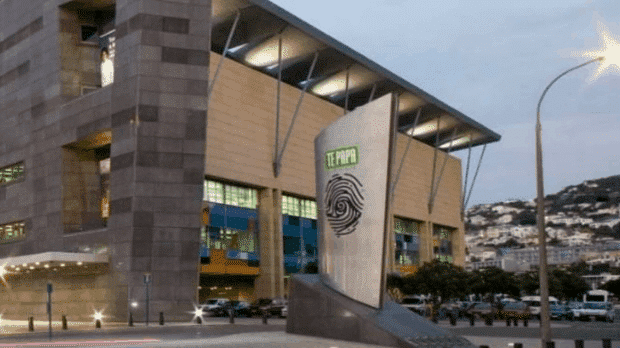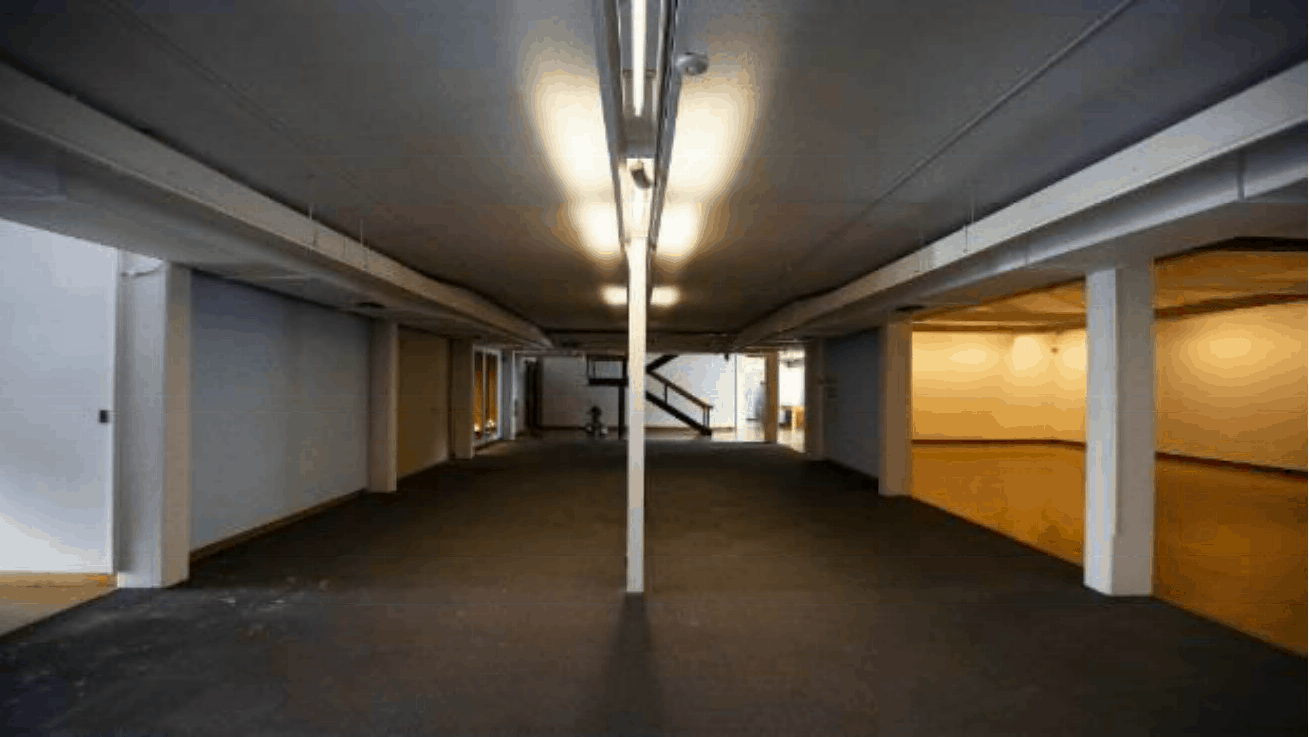Auckland Council’s draft budget for 2023/24, proposes to cut $36.5M from regional arts, events, and…
GRASS ROOTS ARTS: VISION, RESOURCEFULNESS AND RESILIENCE
Arts and culture have taken a bad beating across the country this year. The following is a litany of losses, both imminent and already undertaken:
- The closure of the Elam Arts School and School of Architecture Libraries
- The dire under-funding of Auckland Art Gallery resulting in threats of closure or charging entry fees
- The cutting of Te Papa collections staff
- The closure of a number of regional galleries including Manawa, Rotorua Museum and Southland Museum and Art Gallery
- The threatened cutting of an art history course at Southland Institute of Technology
- The downsizing of NZ’s biggest architectural firm Jasmax, with significant staff cuts
And then we were hit once again with the news last week (28.8.18) that ‘AUT is planning to cut at least 40 jobs at its Society and Culture faculty because of falling student numbers. A document sent to staff by its Faculty dean claimed that ‘full-time enrolments had fallen by 19% – a total of 714 students – between 2012 and 2017.’
The parlous predicament of Arts and Culture, and other creative institutions and initiatives, is documented below in the swag of articles that have been appearing in the news over the past year. Despite vocal protests, and pleas for protection against closure, redundancy or restructuring, the axe has fallen and continues to swing, as Aotearoa is stripped of its proud cultural identity.
These developments fly in the face of Labour’s vision for arts, culture and heritage. “Labour recognises that participating, creating, growing, and achieving in arts and culture are basic parts of human expression and identity. We have a shared responsibility to ensure all New Zealanders can participate in the arts. A strong cultural and creative sector is vital to our national identity and economic development.” (Labour Party Manifesto)
In the midst of all this cultural decimation, we believe that grass roots arts communities are stable and creatively proactive, making positive change in the creative sector, despite minute budgets and minimal staff. As mentioned, the Depot is running an ArtsLab (PACE) programme that supports more than 100 creatives into work. We are working with schools in developing a practical career path for young artists, and we are in the throes of building a promotional platform for creatives across all disciplines. Our galleries and recording studio provide opportunities for emerging talent, along with our mentoring services.
Auckland University confirms library closures despite huge protests
21/06/2018
Amanda Jane Robinson
The University of Auckland has confirmed its decision to close down three specialist libraries and cut more than 100 jobs in support services.
This means the School of Fine Arts, Architecture, and Music and Dance Library collections will now be consolidated into the school’s General Library.
The Vice-Chancellor’s announcement states changes won’t occur this academic year, and the moving of books will not happen until space is freed up in the General Library.
The decision comes after months of protests from students and staff that piqued with an April rally attended by more than 1000 people.
Vice-Chancellor Stuart McCutcheon said the university’s financial situation requires the move.
“Our library system is among the most expensive in a group of more than 35 universities across New Zealand and Australia. The principal reason is that we continue to operate multiple library sites while most others in the group have already consolidated theirs.
“There is already a highly significant shift to digital access of the library collection, creating a further reason to revise our approach to the delivery of services.”
Mr McCutcheon says he appreciates that this has been a challenging process for students and the 114 staff whose jobs in the libraries and learning services have been cut.
Students have pointed out the Vice-Chancellor’s annual salary of more than $710,000 is an alternative area costs could be reduced.
Mr McCutcheon’s salary makes him the highest paid chief executive of all national tertiary education institutions, and the second highest paid chief executive in the Public Service and State sector – just below the State Services Commissioner.
A large group of students and staff from group Save UoA Fine Arts Library protested the decision outside the office of the Dean of the Creative Arts and Industries department on Thursday.
In a statement, the groups say they respectfully asked Dean Diane Brand to speak face to face.
“She refused and instead called security. The Elam Students Association provided the Dean and Director of Library and Learning Services with an opportunity to announce the decision to the group, however they chose to shut them out and conduct the meeting in a secluded room. Diane Brand was escorted out by security.”
Student protestors are frustrated with the decision, and say the move is short-sighted.
“University management do not have a plan in place as to what will replace the spaces once the collections are moved out. Closing them will have a detrimental impact on the quality of student research, education, and life.
“We agree that the Government needs to direct more funding towards tertiary education, but the Vice-Chancellor should not use this failing to justify his own execution of short-sighted cost-cutting measures.”
They say they will continue to protest the university’s decision.
Southland Museum Closure a Scandal
11.4. 2018
EDITORIAL: So it’s come to this. Has the Southland Museum and Art Gallery been dithered to death?
For years stretching into decades, expensive dreams of expansion turned to mirages. The defence that other imperatives arose in the meantime – Stadium Southland fell down and a wider matrix of inner-city upgrade issues had to be fitted in with – doesn’t explain away a real lack of purposeful planning and effective public engagement.
Those who would defend this sorry inertia also cite the structural issues that arose as new rules regarding earthquake safety kicked in. But to a shameful extent the clearly necessary task of fronting up to those were treated as tomorrow’s problems.
Tomorrow showed up this week. All those years with nary a trace of urgency led to a tsunami of it as the Invercargill City Council’s new chief executive Clare Hadley and the also-new chair of the Southland Museum and Art Gallery Trust Board Toni Biddle, fronted up (in the disgraceful absence of the players who got us to this point) to announce the indefinite closure of the facility on the grounds of earthquake risk.
Indefinite, as in God knows for how long. And resolvable at an expense of God knows how much money. Requiring God knows how much recalibration of the priorities set out within the council’s long-term plan, freshly published for public consultation and already looking
alarmingly overtaken by events. Casting all but maybe 13 or 14 of the museum’s staff out of work and potentially inconveniencing tuatara.
Cue howls from social media that new building standards are stupidly high for what a practical world should require. But Hadley’s hardly being gratuitously meddlesome, given that legally the buck stops with her, not just her council or the trust board, as responsible for providing a safe environment for staff and public.
Please note: failing to meet the seismic rating doesn’t itself mean the building is automatically classed as “earthquake prone”. That designation must be applied, upon further investigation, by a territorial authority. But Hadley dismisses the possibility of yet more stalling action- especially given that the 2013 determination that it probably was earthquake prone has just been confirmed by a review.
Here, absolutely, is where massive public reproach is warranted. Much as Building Act changes needed to be factored in, in the five years since that 2013 report arrived and was made public the council has sat on its hands for a reassessment to confirm that this was a problem requiring action. That report – oh, come on! – shows up only now, and seems to say little more than “yep”.
A climate of sluggardly serenity, and quiet risk-running, has been replaced by a frankly spooked reassessment. The scandal is less the new approach than the old one which oh-so-slowly landed us, quite so unprepared, in this mess.
https://www.stuff.co.nz/southland-times/opinion/102995534/southland-museum-closure-a-scandal
Southland museum closure based on incorrect assumptions, architect says

Southland Museum and Art Gallery. Photo: Supplied/Facebook/Southland Museum and Art Gallery
The $40m in funding, part of Invercargill City Council’s 10-year plan, would be staggered over the coming decade in the hope of reinvigorating arts and culture.
The decision was made just over a month after Southland Museum and Art Gallery was forced to close due to earthquake risk, a move widely condemned by the city’s residents.
Supporters of the new spending said it would lead to a cultural renaissance in Southland, but critics said it should not be a matter of one or the other – and the museum should stay open in the meantime.
Cherie Chapman, one of a small but growing band of residents protesting the closure, said legislation allowed the museum to remain open, but the council had ignored that option.
“It’s appalling that we can’t open the museum now,” she said.
“I do not understand, and none of us do, why they haven’t re-opened the museum, given the legislation allows them to do that,” she said.
“It’s disappointing that this council has decided that they’re going to keep the museum closed and drip-feed money into [it].”
The council has moved forward the planned redevelopment of the museum, however, with work due to begin in five years.
Rotorua Museum Closure: One year on
18.11.2017
Stephanie Arthur-Worsop

When the Rotorua Museum closed because of earthquake damage, officials expected the building to be reopened in a week or two.
But one year on, its doors remain closed and its fate unknown.
The category 1 heritage building, which is more than 100 years old, was closed without warning on November 18 last year after cracks appeared in parts of the building following the 7.8-magnitude earthquake that struck the South Island four days earlier.
The damage was limited to the historical, central part of the building and included cracking and movement in walls, ceilings, floor slabs, beams and columns.
At the time, Rotorua Lakes Council arts and culture director Stewart Brown said the closure was just a precaution and they were “erring on the side of caution to ensure the safety of our staff and public isn’t put at risk”.
Less than a week later, Brown said the museum would be closed for at least another week.
By December 2 it was revealed Rotorua’s most recognisable building would be closed indefinitely and about 20 jobs would be lost.
Te Papa confirms restructure, calls in international experts
3:14 pm on 1 August 2018
Hamish Cardwell, hamish.cardwell@radionz.co.nz
Te Papa is pushing ahead with plans to restructure its collections team but will also have international experts review how it looks after its natural history collections.
https://www.radionz.co.nz/news/national/361885/jobs-on-the-line-at-te-papa-document-leak-reveals
Last month the museum announced plans to cut the number of staff in its collections area – leading to a public outcry over how the nation’s treasures would be looked after.
Today it confirmed it would merge the collections managers and conservators into one team, but staff will have to wait months to find out if they have lost their jobs.
The public outcry has prompted it to convene an international panel of collections preservation specialists to review its national history collections.
Te Papa’s director of strategy and performance Dean Peterson told RNZ’s Our Changing World it was also doing an internal review of collections to compare Te Papa against other museums worldwide.
For more on changes at Te Papa read and listen to Our Changing World’s coverage.
Scientists urge Te Papa to invest in collections research rather than strip them of staff video
DANI MCDONALD July 16 2018
A document leaked to media on Monday revealed the national museum had proposed a staffing restructure that could cut up to 25 positions from its permanent work force, with 50 jobs in total affected.
In a statement, Te Papa spokesperson Kate Camp said the museum wanted to modernise its approach in caring for and accessing the collections as a result of changing technology.

Winning a competition to design Wellington’s Te Papa Tongarewa museum soon after being founded in a merger in 1989 thrust Jasmax into the limelight as an architecture firm. Now the company is laying off staff..
NEWSROOM: Jasmax Cuts Staff in a Building Boom
Nikki Mandow is Newsroom’s business editor @NikkiMandow
New Zealand’s biggest architectural firm Jasmax is laying off staff and has seen its managing partner resign from the company.
The company is remaining tight-lipped about the reasons behind the cuts, but they come at a boom time for the construction sector.
Jasmax is behind some of New Zealand’s biggest building projects, including Wellington’s Te Papa museum and Lambton Square shopping centre, the Fonterra building and Sir Paul Reeves centre in Auckland and Christchurch’s Burwood Hospital. It’s also part of Auckland’s massive City Rail Link project.
The company won’t say how many of the company’s 250 or so staff and 22 principals have been made redundant, but one staffer estimated it could be 10-20 percent.
Jasmax marketing communications manager Sarah Rothwell confirmed the departures, but said commercial sensitivity was one reason she couldn’t give more details.
“We are adapting our business to current market demands, ensuring that we have the right skillset and capacity to best support our existing and future clients.”
She said managing principal Marko den Breems will leave in June at the end of his current term.
“[Den Breems] has resigned after six years in this role; this is unrelated to the recent changes to the business… He intends to pursue new opportunities,” Rothwell said.
One industry insider said it was normal for firms to scale up and down depending on work volumes.
“They’ve just finished up a big project at the airport, having maxed out there. I wouldn’t read too much into this.”
Jasmax’ website reflects different times. “The continuing process of adding new staff, all of whom bring new ideas and energy, has enabled the current Jasmax team to carry on the innovative and entrepreneurial zeal of their predecessors,” it says.
Jasmax isn’t the only company feeling the pinch of a construction boom. Jobs are expected to go at Fletcher Building’s B+I (building and interiors) division, after the company reported a half-year operating loss of $322 million related to cost blowouts on some big projects, and said it would stop bidding for big commercial building work.
https://www.newsroom.co.nz/2018/04/04/102610/jasmax-cuts-staff-in-a-building-boom
Financial crisis may see Auckland Art Gallery turn away visitors one or two days a week
8.11.2017
The Auckland Art Gallery is facing a financial crisis that could see it turn away visitors and tourists on one or two days of the week.
The gallery has won wide acclaim, including a major international architecture award, since it re-opened in 2012 after a $121 million upgrade.
It is open every day, except Christmas Day.
Large crowds are drawn to its unrivalled collections of New Zealand art and international exhibitions like the current Renaissance and Baroque masterpieces from the Corsini family in Florence.
https://www.nzherald.co.nz/nz/news/article.cfm?c_id=1&objectid=11941519
Ten-month gallery closure for repairs and improvements slashed after public outcry
CARLY THOMAS: 15.8. 2018

Te Manawa’s art gallery will reopen in September.
Te Manawa’s art gallery will reopen next month after the originally slated 10-month closure provoked a public outcry.
The 40-year-old building shut last month for repairs and improvements to make it safe and improve display areas.
The Te Manawa Art Society and other art enthusiasts in the city were unhappy with the length of the closure and since then the Palmerston North City Council and Te Manawa have “re-scoped” the work so it can be finished earlier. But, a councillor has warned, this means some of the non-essential work planned has been put off.
“The work should all now be completed by the end of September,” council community general manager Debbie Duncan said. “This includes work on the gallery walls, reworking the reception and some minor improvements to the staffroom.”
https://www.stuff.co.nz/manawatu-standard/news/106291704/tenmonth-gallery-closure-for-repairs-and-improvements-slashed-after-public-outcry
AUT to cut 40 jobs at Society and Culture Faculty, blames falling interest in arts and humanities
27.8.2018

Auckland University of Technology is planning to cut at least 40 jobs at its Society and Culture faculty because of falling student numbers.
The university is the latest to express concern about declining interest in studying arts and humanities in New Zealand, which has led to a large budget shortfall at the faculty.
The Tertiary Education Union says the scale of the proposed cuts has shocked staff and it is urging the university to reconsider its plans.
A document sent to staff by the Faculty of Society and Culture dean Nigel Hemmington said full-time enrolments had fallen by 19 per cent – a total of 714 students – between 2012 and 2017.
https://www.nzherald.co.nz/nz/news/article.cfm?c_id=1&objectid=12114466





